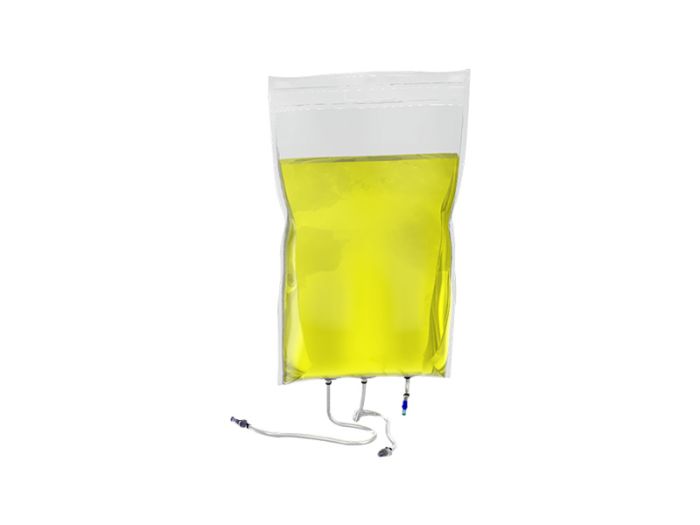What types of polymer composite films are there
Translated in English: Polymer composite film is a film made of two or more different materials through a composite process. It combines the advantages of each component and is widely used in packaging, electronics, medical, construction and other fields. According to the different composite materials and structures, polymer composite films can be divided into the following main types:
1. Classification by composite materials
Plastic composite film
Features: Plastic (such as PE, PP, PET, PA) as the base material, composited by co-extrusion, coating or lamination.
Application: Food packaging (such as cooking bags), industrial packaging, agricultural covering film.
Example:
PE/PA composite film: high barrier properties, suitable for packaging oily foods.
PET/Al/PE composite film: high light and oxygen barrier properties, used for pharmaceutical packaging.
Paper-plastic composite film
Features: Paper and plastic (such as PE, PP) are composited, with both strength and moisture resistance.
Application: liquid packaging (such as milk cartons), food packaging, cosmetics packaging.
Example:
Paper/PE composite film: commonly used in frozen food packaging.
Paper/Al/PE composite film: used for food packaging with high barrier requirements.
Aluminum-plastic composite film
Features: Aluminum foil is composited with plastic (such as PE, PP, PET) and has excellent barrier properties.
Applications: Pharmaceutical packaging, food vacuum packaging, moisture-proof packaging of electronic products.
Example:
Al/PE composite film: commonly used in pharmaceutical blister packaging.
Al/PET/PE composite film: used for food packaging with high barrier requirements.
Inorganic/organic composite film
Features: Inorganic materials (such as SiO₂, Al₂O₃) are composited with organic polymers, combining mechanical strength and functionality.
Applications: Optical films, electronic packaging, gas separation membranes.
Example:
SiO₂/PET composite film: used for optical coating.
Al₂O₃/PI composite film: used for high-temperature electronic packaging.
Bio-based composite film
Features: Biodegradable materials (such as PLA, starch) are used as the base material, which is environmentally friendly and degradable.
Applications: Disposable packaging, agricultural films.
Example:
PLA/PBAT composite film: used for food packaging.
Starch/PVA composite film: used for agricultural covering film.
2. Classification by composite structure
Laminated composite film
Features: Bonding multiple layers of materials together by adhesive or hot pressing.
Application: High barrier packaging, electronic packaging.
Example:
PET/Al/PE laminated film: used for pharmaceutical packaging.
PA/EVOH/PE laminated film: used for food packaging.
Co-extrusion composite film
Features: Through the multi-layer co-extrusion process, different materials are extruded and formed at the same time.
Application: food packaging, agricultural film.
Example:
PE/EVOH/PE co-extrusion film: used for vacuum packaging.
PP/PA/PP co-extrusion film: used for industrial packaging.
Coated composite film
Features: Coating functional coatings (such as barrier layers, antibacterial layers) on the surface of the substrate.
Application: food packaging, medical supplies.
Example:
PE/SiOx coated film: used for high barrier packaging.
PET/Ag coated film: used for antibacterial packaging.
3. Classification by function
High barrier composite film
Features: Excellent oxygen and water vapor barrier properties.
Application: Food and pharmaceutical packaging.
Example:
PA/EVOH/PE composite film: used for vacuum packaging.
Al/PET composite film: used for pharmaceutical packaging.
Antibacterial composite film
Features: Add antibacterial agent or have antibacterial coating.
Application: Medical supplies, food packaging.
Example:
Ag/PE composite film: used for antibacterial packaging.
TiO₂/PET composite film: has self-cleaning function.
High temperature resistant composite film
Features: Use high temperature resistant materials (such as PI, PTFE).
Application: Electronic packaging, aerospace.
Example:
PI/Al composite film: used for high temperature electronic packaging.
PTFE/glass fiber composite film: used in corrosion resistant environment.
Degradable composite film
Features: Use biodegradable materials, environmentally friendly and recyclable.
Application: Disposable packaging, agricultural film.
Example:
PLA/PBAT composite film: used for food packaging.
Starch/PVA composite film: used for agricultural covering film.
4. Classification by application field
Food packaging composite film
Features: high barrier, high temperature resistance, antibacterial.
Examples: cooking bags, vacuum packaging films.
Medical packaging composite film
Features: high barrier, sterility, chemical resistance.
Examples: pharmaceutical blister packaging, infusion bags.
Electronic packaging composite film
Features: high temperature resistance, insulation, low dielectric constant.
Example: FPC (flexible circuit board) packaging film.
Agricultural film
Features: weather resistance, light transmittance, degradability.
Examples: ground film, greenhouse covering film.
5. Classification by composite process
Dry composite
Features: composite different materials through adhesives.
Application: general packaging film.
Wet composite
Features: composite after coating water-based adhesive on the surface of the substrate.
Application: food packaging film.
Coextrusion composite
Features: multiple layers of materials are extruded and molded at the same time.
Application: high barrier packaging film.
Summary
There are many types of polymer composite films, and the following factors should be considered when choosing:
Material properties: barrier properties, temperature resistance, mechanical strength.
Application requirements: food, medicine, electronics, agriculture.
Cost and environmental protection: degradability, recyclability.
By rationally selecting the type of composite film, product performance can be significantly improved to meet the needs of different industries.



